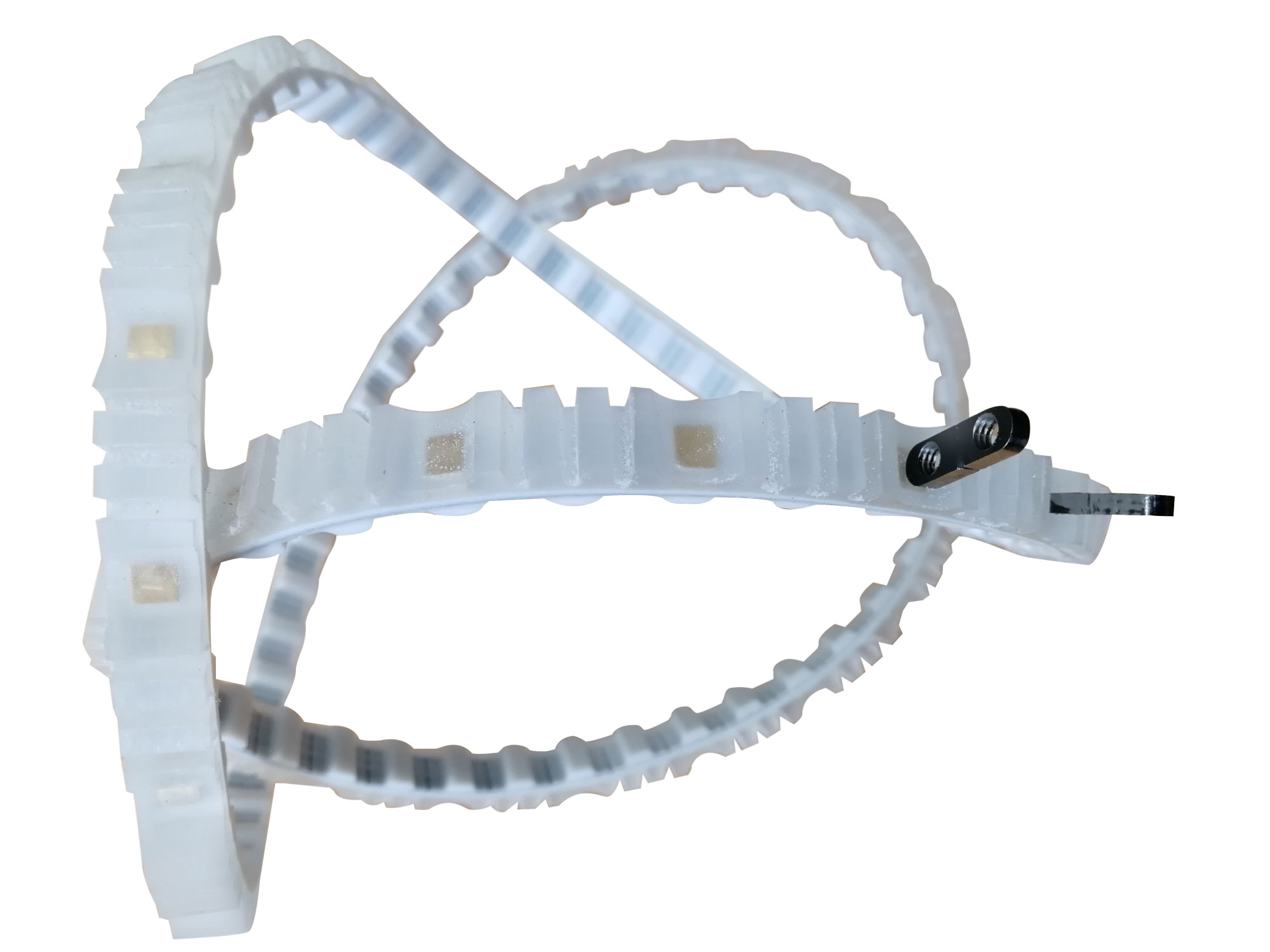Magnetic timing belts
Versatile all-rounders for a wide range of automation and transport tasks

Magnetic timing belts
Versatile all-rounders for a wide range of automation and transport tasks
Magnetic timing belts are frequently used for applications in automation technology or for conveying magnetic goods. They have long since proven their worth as versatile and flexible system components. For which different tasks are magnetic timing belts actually suitable? How are they designed? And what possibilities do they offer for individual adaptation?
Wide range of applications for magnetic timing belts
Originally, magnetic timing belts were developed for the transport of magnetizable components. These can be fixed to the belt by the holding force of the magnets and thus transported safely and in a stable position. This is particularly helpful for applications in which the static friction between the transported goods and the belt surface alone is not sufficient for slip-free transport. This is the case, for example, with inclined, overhead and vertical conveying or when transporting round or spherical components such as bearing balls or rollers.
But magnetic timing belts have much more to offer than one might assume at first glance. Here is an overview of some possible applications:
- Transport fixation of magnetic goods
- Separation of magnetic parts
- Quick-change systems for magnetic cams
- Transport of light, flat goods such as paper or foil
- Magnetic compartment belts for piece goods
- Haul-off belt.
How are magnetic timing belts structured?
The basic belt for a magnetic timing belt is usually made of PU. A variety of standard shapes and sizes are available here. If required, we are also pleased to manufacture an individual timing belt.
The magnets are embedded directly in the belt body. For our magnet belts, we use neodymium magnets, which offer excellent holding force even at very small dimensions. Neodymium magnets are currently the strongest permanent magnets available on the market. They consist of an alloy of neodymium, iron and boron and behave permanently magnetic. They also exhibit high stability against demagnetization over a long period of time. The desired holding force can often be achieved with magnets even in the millimeter range. Their space requirement in the belt body is therefore very low, which offers many possibilities for positioning.
On request, a magnetic timing belt can also be refined with a coating that further optimizes the properties of the belt surface. A coating can, for example, protect the belt against wear, adjust the coefficient of friction or achieve better temperature resistance.
Individual design options
In principle, our customers are free to choose all the parameters of a magnetic timing belt, as far as this is constructively possible. These include the geometry of the magnets, which can be individually adapted to the geometry of the goods being transported, the distances between the individual magnets, the strength of their magnetic field, and their polarization. It is also possible to arrange the magnets on the belt with opposite polarity, which allows alternating repulsion and attraction. All these freely selectable features result in a customized conveyor belt that is precisely matched to the task at hand.
Application example: Transport of paper
Transporting flat, lightweight goods such as sheets of paper or foil is not entirely trivial. If you move them at a certain speed on a conveyor belt, air resistance would cause them to lift off. Any draft could also blow them off the conveyor belt. Safe transport can be achieved here with the aid of two magnetic timing belts, which attract each other and clamp the sheets of paper between them with their holding force. Another variant is to clamp the sheets between a magnetic timing belt and a magnetic surface with the lowest possible friction on which the transport material can slide.
Application example: Magnetic compartment belt
Magnetic compartment belts also function according to a similar principle. Two belts arranged with their backs to each other and with magnetic webs at regular intervals attract each other. Piece goods can be held and transported in the compartments thus created in the spaces between the webs.
Application example: Interchangeable cam systems
Interchangeable cams are used when a quick exchange of cams is required for changing transport goods, or when individual cams are to be replaced quickly due to damage or wear. Compared to screw and clamp systems, magnetic systems offer the most flexible and fastest way to position and change cams. Cams equipped with magnetic surfaces can simply be placed on the corresponding points of the magnetic timing belt and removed again just as easily if required.
All-rounders for demanding tasks
Magnetic timing belts prove their worth even in complicated positioning and conveying tasks. Thanks to their precisely adjustable holding force, they perform a wide variety of functions safely and reliably. Individually definable parameters offer plenty of scope for a conveyor belt that is perfectly tailored to the material to be conveyed.
We will be happy to manufacture a customized magnetic timing belt for your application. Simply contact us, we look forward to your message!
Contact

